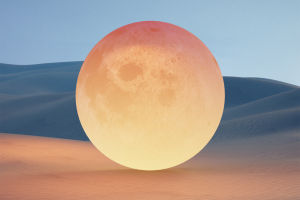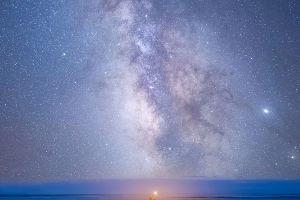Monument Valley is one of the most spectacular natural landscapes on Earth, with its majestic sandstone columns and vast plains attracting countless tourists and photographers.
This magnificent landform is located on the border of Arizona and Utah in the United States and is protected and managed by the Navajo Nation.
Monument Valley is not only a popular filming location for movies and commercials but also a treasure trove for geologists and nature lovers to study and explore.
The landform of Monument Valley has undergone millions of years of geological changes, and its core feature is the towering sandstone columns. The formation of Monument Valley can be traced back to 270 million years ago when the area was a vast plain and shallow sea.
Over time, sedimentation accumulated a large amount of sand, soil, and other materials in this area, forming thick sedimentary layers. After a long period of compaction and consolidation, these sedimentary layers gradually turned into hard rocks, including sandstone, shale, and limestone.
In the subsequent geological era, crustal movement and tectonic activities caused the Monument Valley area to experience dramatic uplift and subsidence.
These crustal movements not only shaped the overall landforms of the area but also caused the fractures and tilts of the rock layers, making the stratigraphic structure complex and diverse.
The main geological structures of Monument Valley were formed by the uplift and erosion of the Navajo sandstone. These sandstone layers have undergone long weathering and erosion and have gradually been shaped into the giant pillars and cliffs we see today.
Weathering and erosion are key processes in the formation of Monument Valley's landforms. Weathering refers to the process by which rocks gradually break and decompose under natural factors such as wind, water, and temperature changes.
The sandstone in Monument Valley is particularly susceptible to weathering because the sandstone itself is relatively loose and contains a large number of pores.
The wind blows over the surface of the sandstone, carrying fine sand particles, which constantly wear away the surface of the sandstone like sandpaper, causing the sandstone to gradually disintegrate and deform.
The erosive effect of water is equally important. Although the Monument Valley area has little precipitation, occasional heavy rains can form short-lived torrents that quickly wash away the surface and carry away a large amount of rock debris and sediment.
This rapid erosion has accelerated the shaping of the landform, making the sandstone pillars of Monument Valley more unique and spectacular. In addition, temperature changes also have an important impact on the weathering of sandstone.
The large temperature difference between day and night causes cracks in the sandstone during thermal expansion and contraction, further accelerating weathering.
The landforms of Monument Valley are not only a masterpiece of natural forces but also an important part of Navajo culture. For the Navajo people, this land is where their ancestors lived and is full of sacred meaning.
The Navajo people call Monument Valley "Tsé Biiʼ Ndzisgaii", which means "the brilliance in the rock valley." They believe that these huge sandstone pillars and cliffs are the residence of gods and represent the power of nature and ancestors.
Therefore, Monument Valley is not only a tourist attraction but also a place full of cultural and spiritual significance.
Monument Valley is a geological wonder shaped by weathering, erosion, and crustal movement. It not only shows the uncanny craftsmanship of nature but also carries the profound culture and history of the Navajo people.
Whether for geologists, tourists, or residents, Monument Valley is a valuable asset worth exploring and cherishing. In the future, protecting and inheriting this unique landform and culture will be our common responsibility and mission.


